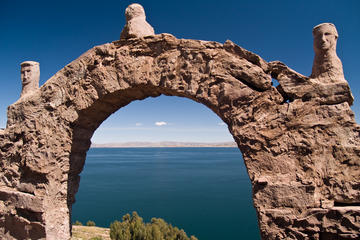
Taquile Island/Isla Taquile
As famed for its handicrafts—the island’s traditional knitwear has been proclaimed a UNESCO Masterpiece of Intangible Human Heritage—as its dramatic, rocky topography topped with windswept pre-Columbian ruins, Isla Taquile is one of Lake Titicaca’s most famous destinations.
It is not easy to get here, however, and most people making the 45km (28mi) trip on the slow boat from Puno opt to spend the night. That, too, can be a challenge, as the island and its sole tourism operator, the Munay Taquile Travel Agency, are communally owned by Taquile’s 2,200 residents. They (or rather, the Taquile Council of Elders) require that the island’s 40,000 annual visitors live much as locals do while on the island.
When tourism began to arrive to Lake Titicaca in the 1970s, shortly after the indigenous government won full ownership of the island, the quiet, agriculturally oriented lives of locals began to change. Outsiders were in control, and brought in boatloads of camera-snapping tourists without the permission or input of local leaders.
Rather than submit to the loss of privacy and profit like so many indigenous communities, however, Isla Taquile’s government secured exclusive rights to transportation, lodging, food service and island tours. Thus, if you choose to visit, you’ll be staying in a family home, eating traditional cuisine and hiking around the island’s Inca ruins and stunning vistas with a local guide.
You’ll also have plenty of opportunity to peruse the island’s famed hand-woven textiles, considered some of Peru’s finest handicrafts and see them made. Knitting is done almost exclusively by men, while women spin yard and work the looms, creating elaborate designs that incorporate both ancient and modern symbolic patterns. Most famous are the knitted hats with earflaps, called chullos: men wear red chullos if married, red and white if single and black to signify leadership. Women usually stick to the stylish bowler-style caps popular throughout the Andes.
